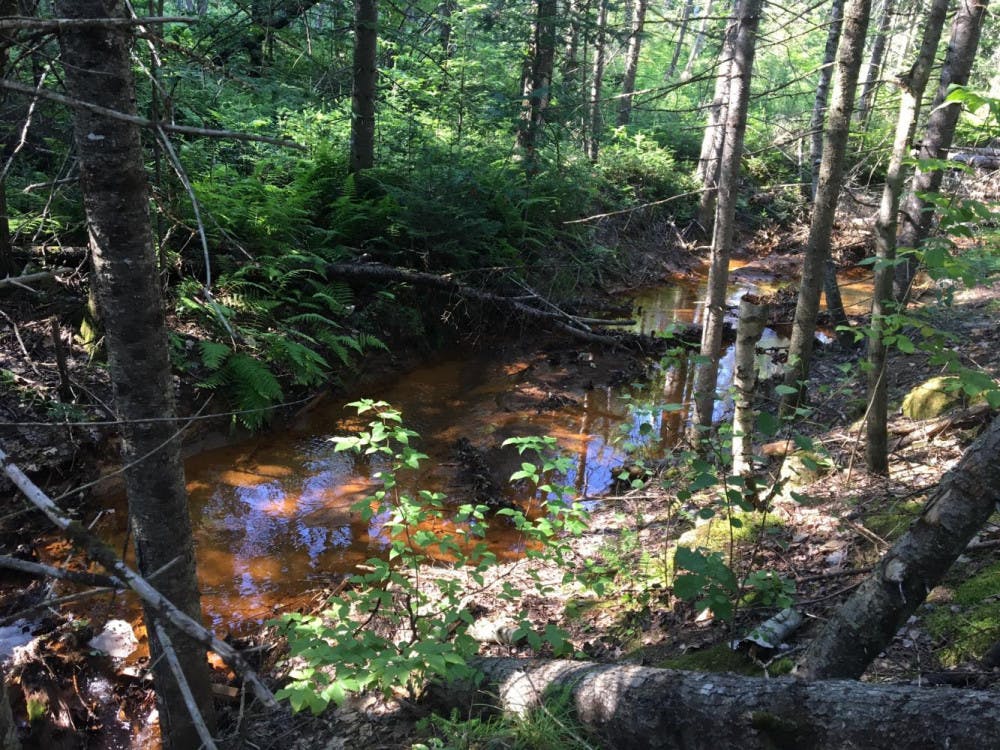Lesley-Ann Giddings, a professor in the biology department, launched a new research project this August that combines her interest in extremophiles, organisms thriving in extreme environments, with a local focus on Vermont’s abandoned copper mines.
Giddings describes the research as an investigation of “how seasonal changes affect microbial populations, in acid mine drainage environments in Vermont, as well as new genes that could be useful in the bioremediation of these low-pH environments.”
Prior to 1846, Vermont was a major source of copper production. Vermont’s three copper mines Ely, Elizabeth, and Pike Hill yielded 150 million pounds of copper. These copper deposits were formed by concentrated metal sulfides, the result of magma flowing between earth’s plates.
Today, these metal sulfides have been left exposed to the elements. Water and oxygen flowing over the deposits oxidize the metal sulfides, generating sulfuric acid. This acid is then capable of dissolving other harmful metals from the surrounding rocks, contaminating the water, causing significant damage to the ecosystem, and threatening public health.
All three mines are Environmental Protection Agency designated Superfund sites, meaning the sites have been identified as national priorities for cleanup because their hazardous waste contamination poses human and environmental health risks.
For a natural products chemist such as Giddings, this sort of extreme environment also opens up a world of possibility.
“These extreme environments have strange resources available to microbes and the microbes can metabolize the resources and create new compounds that help them adapt to that environment,” Giddings said.
She is interested in what important functions are present in these microbes that have allowed them to adapt to and survive within this environment.
In order to better understand these microbial functions, Giddings is conducting a comparative study by taking samples in January and July to look at “seasonal differences in the acid mine drainage microbial community, as well as the metabolic pathways that are selectively upregulated in different seasons,” she explains.
The changes in temperature, conductivity, and pH produce different metabolic activities that may answer questions about how this microbial community changes and why. Analyzing these differences will have two major components. Firstly, Giddings will sequence DNA in acid mine drainage to identify seasonal changes in microbes and gene expression. Secondly, she will culture microbes to determine the molecules individual microbes are making under conditions that mimic their native environment.
The cultures will also indicate how the microbe metabolic profiles change between winter and summer months.
Currently, the government is tackling acid mine drainage problems by capping the exposed metal sulfides so that they cannot become oxidized and produce acid. This type of solution could cause long-term stewardship issues such as maintaining the cap and preventing trespassing. Furthermore, a 2017 Vermont Legislature testimony estimates total project costs for remediation of the Elizabeth Mine to be $11 million and total costs for the Ely Mine to be $26 million.
What is really needed is a way of filtering out these toxic metals that have polluted the streams at these mine sites. Giddings points out that the microbes present at these sites are already interacting with the metal and so she asks, “why not learn about how the microbes are interacting with the metals to see if we can find a more cost effective way of cleaning up these sites?”
Through identifying genes, Giddings hopes to answer questions such as how microbes traffic metals — Do they bind specifically to metals and sequester the metals? Have they evolved mechanisms to pump metals out of cells? Through this gene research and a better understanding of the metabolic pathways of the microbes, perhaps a more efficient solution could be created for the bioremediation of acid mine drainage sites.
Giddings’ biochemical approach to a major environmental issue has a lot of exciting potential for the future.
As she articulates, “there may be a silver lining found in microbial adaptation to polluted environments.”




